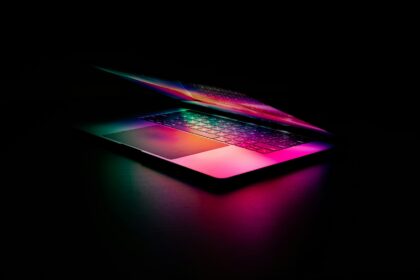In today’s digital world, cybersecurity problems have grown a lot. They affect all kinds of businesses worldwide. These threats can harm operations and damage reputations, showing how important strong cyber defense is.
This guide gives you 10 key steps to boost your cybersecurity. It offers a full plan for protecting data and fighting threats. By following these steps, your organization can keep its important information and systems safe from new cyber dangers.
Establish a Cybersecurity Culture
Building a strong cybersecurity culture is key to protecting against cyber threats. It’s important that all employees know their part in keeping things safe.
Provide Regular Training
It’s vital to have ongoing training for employees. These sessions should teach about phishing, password safety, and software updates. The aim is to make a team that can spot and handle threats.
Encourage Reporting of Suspicious Activities
It’s also important to make it easy for employees to report any odd activities. This helps in catching and fixing security issues fast. Having clear ways to report helps a lot in keeping things secure.
“Creating a culture of cybersecurity awareness is not an option, but a necessity for every organization.” – Jane Smith, Cybersecurity Expert
A strong cybersecurity culture, with regular training and a good reporting system, keeps an organization ready for cyber threats.
Implement Multi-Factor Authentication
Adding multi-factor authentication (MFA) is key to better enhanced security and strong access control. It makes sure users give two or more proof steps before they can get into systems or data. This big step cuts down the chance of someone getting in without permission.
As cyber threats grow, just usernames and passwords aren’t enough to keep data safe. MFA adds an extra layer of enhanced security. It uses something you know (like a password), something you have (like a token), and something you are (like biometrics). This mix makes it hard for hackers to get in, even if they steal login info.
Companies need to put MFA everywhere to keep data safe. For example, using MFA for remote work, on-site systems, and cloud apps can stop attacks and protect important data.
| Authentication Factor | Example |
|---|---|
| Knowledge | Passwords, PINs |
| Possession | Security tokens, Mobile devices |
| Inherence | Biometrics, Facial recognition |
Encrypt Sensitive Data
In today’s digital world, keeping sensitive data safe is key. Data encryption is a top cybersecurity step. It makes data unreadable without the right decryption keys, keeping important data secure.
Data at Rest Encryption
Data at rest encryption is vital for keeping stored info safe on devices. It turns data into an unreadable form when not in use. This way, even if hackers get physical access, they can’t read the data without the correct keys.
Tools like BitLocker and FileVault help make systems more secure.
Data in Transit Encryption
Keeping data safe while it’s being sent is just as important. Data in transit encryption keeps data confidential and safe from hackers. It uses protocols like SSL/TLS to encrypt data in transit.
This greatly reduces the chance of data being intercepted or tampered with by bad actors.
| Encryption Method | Usage | Benefits |
|---|---|---|
| Data at Rest Encryption | Secures data stored on hardware | Prevents unauthorized access to stored data |
| Data in Transit Encryption | Protects data during transfer | Ensures data integrity and confidentiality |
Conduct Regular Vulnerability Assessments
It’s key to find and fix security issues in your IT setup. Doing vulnerability assessments regularly helps spot threats early. This way, you can fix security gaps before they’re used by hackers. It keeps your company safe by always checking and updating your defenses.
Spending time and money on vulnerability assessments lowers your risk of security problems. This makes your cybersecurity better and shows you’re reliable. It shows you’re serious about keeping data safe, which makes clients trust you more.
Vulnerability assessments also make it easier to find and fix problems before they get worse. With new threats all the time, having a strong cybersecurity plan is essential. Regular vulnerability assessments are a big part of keeping your data safe from harm.
Implement Intrusion Detection and Prevention Systems
In today’s digital world, keeping your network safe is key. Using intrusion detection and prevention systems helps fight threats in real-time. This way, companies can protect their valuable assets.
Monitor Network Traffic
Watching your network traffic closely is a must. It helps spot unusual activity that might mean a cyber attack is coming. By always checking traffic patterns, you can find oddities and act fast.
Automate Threat Responses
Automated defenses are important in today’s security plans. When a threat is found, these systems take action right away. This cuts down the chance of big problems. It also keeps your network safe from new threats all the time.
Establish an Incident Response Plan
Starting with a detailed plan is key to effective incident response. It outlines how to handle cyber incidents. This preparation helps reduce damage and tackle threats quickly.
Document Procedures and Steps
It’s important to document your incident response plan. This should clearly state each team member’s role and what they need to do in an emergency. The steps should be clear and follow a logical order, guiding the team through the crisis.
Include Communication Strategies
Good communication is essential in your incident response plan. It ensures all important people are informed during a cyber attack. Having clear communication channels is vital for sharing critical information fast. This helps in managing emergencies well.
Back Up Your Data
Creating and keeping regular data backups is key for any organization’s digital safety. Using data backup strategies makes sure you can quickly get back your data. This reduces downtime and the chance of losing important information.
The 3-2-1 backup rule is a great strategy. It means you should have three copies of your data. Two should be on different devices at home, and one should be stored somewhere else. This way, your data is safe from many dangers, like cyber-attacks and natural disasters.
Using automated backup tools can also help a lot. These tools make sure backups happen on their own, without you needing to do anything. This means less chance of mistakes and better protection for your data. It also makes information recovery faster, keeping your data safe and available.
| Backup Strategy | Advantages |
|---|---|
| 3-2-1 Rule | Offers robust data security and redundancy |
| Automated Backups | Minimizes human error and ensures regular data protection |
| Offsite Backups | Protects against local disasters and cyber-attacks |
By adding these data backup strategies to your IT routine, you make your organization stronger. You ensure quick and reliable data recovery when needed.
Implement Email Security Controls
Keeping your emails safe is key in today’s world. By using different email security controls, you can protect your data from threats. This helps keep your information safe.
Block Suspicious Emails
It’s important to block emails that seem fishy. Advanced filters can catch these emails before they reach you. They look for signs of phishing and malware.
Make sure to update these filters often. This keeps them working well against new threats.
Conduct Phishing Simulations
Phishing simulations are also vital. They help your team learn to spot phishing emails. This training makes them better at avoiding scams.
Learning through real examples makes a big difference. It helps your team stay safe from fake emails.
Conclusion
Following these 10 steps helps protect your organization from cyber threats. Start by creating a cybersecurity plan and teaching your team about security. This way, your company can handle cyber risks and keep its data safe.
Training, using multiple ways to log in, encrypting data, and checking for vulnerabilities are key. Also, having systems to detect intrusions, plans for when something goes wrong, and secure email controls are important. Together, they build a strong defense against new threats.
As cyber threats grow, it’s vital to keep learning and improving your security. Update your cybersecurity measures often to stay ahead. In today’s world, being proactive about cyber security is key to keeping your company safe and successful.
FAQ
Why is establishing a cybersecurity culture important for organizations?
A strong cybersecurity culture is key to protecting against cyber threats. Training employees helps them spot and handle threats. It’s also important to teach them to report any suspicious activity quickly.
How does multi-factor authentication (MFA) improve security?
MFA adds a vital layer of security. It requires users to provide more than one proof to access systems. This makes it much harder for hackers to get in, keeping data safe.
What are the benefits of encrypting sensitive data at rest and in transit?
Encryption keeps data safe by making it unreadable without the right keys. It protects data stored and being moved. This is a must for a solid cybersecurity plan.
Why are regular vulnerability assessments important for cybersecurity?
Regular checks find and fix security weaknesses. This helps prevent attacks and boosts security. It’s a proactive way to keep systems safe.
What roles do intrusion detection and prevention systems play in cybersecurity?
These systems are vital for catching and stopping cyber threats. They watch network traffic for signs of attacks. Quick responses help limit damage.
What should be included in an effective incident response plan?
A good plan outlines how to handle cyber incidents. It includes clear steps and roles for teams. It also covers how to keep everyone informed during an attack.
Why is regular data backup important for organizations?
Backups keep data safe and available, even after attacks. Using automated backups and the 3-2-1 rule helps. It’s key for keeping business running smoothly.
How can organizations enhance email security?
Better email security comes from using advanced filters and tech. It blocks bad emails and attachments. Training employees to spot phishing also helps prevent breaches.
























